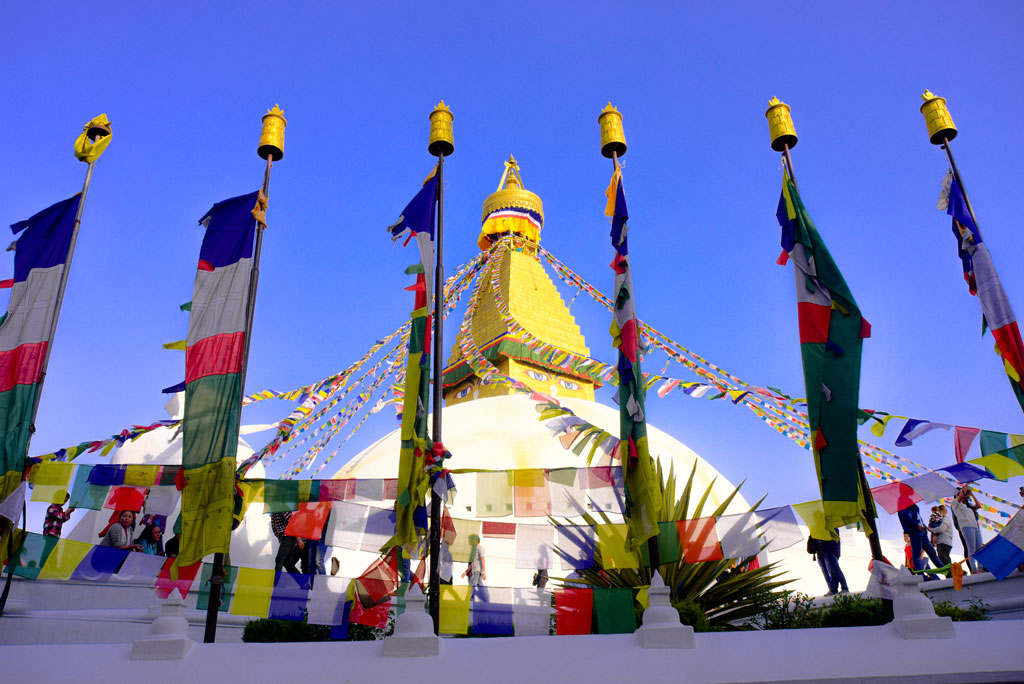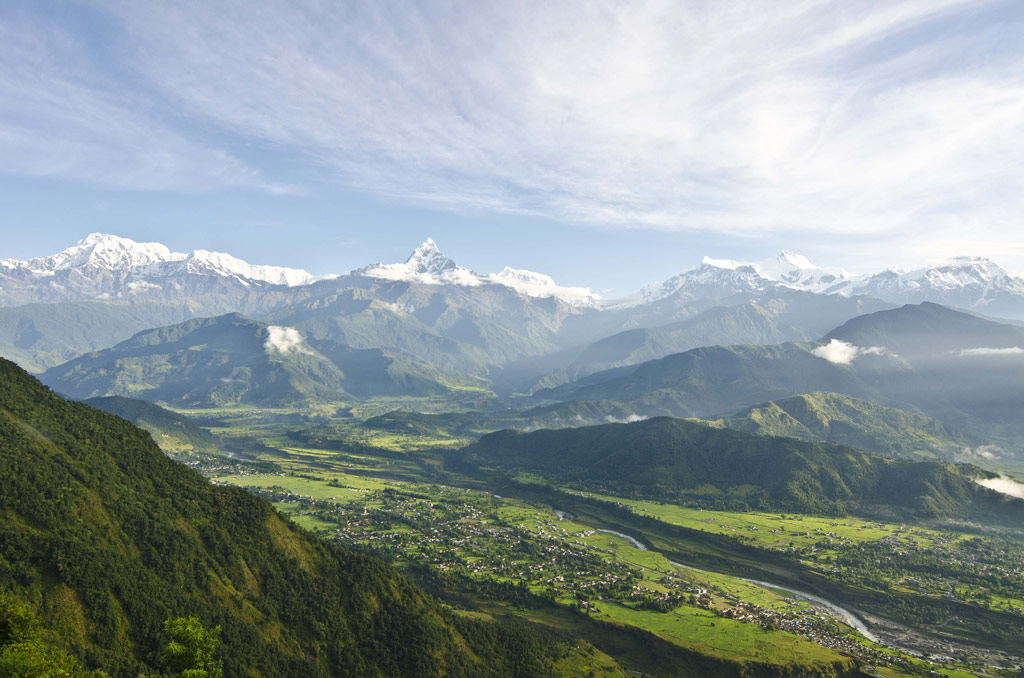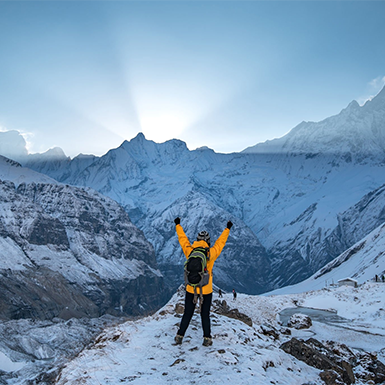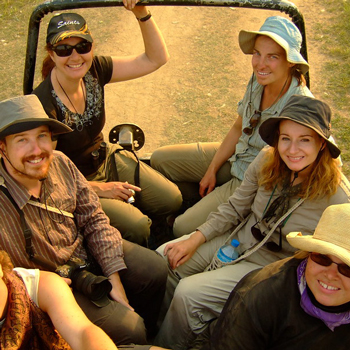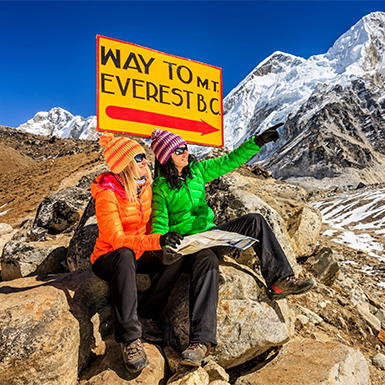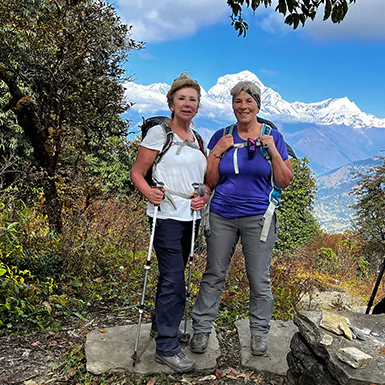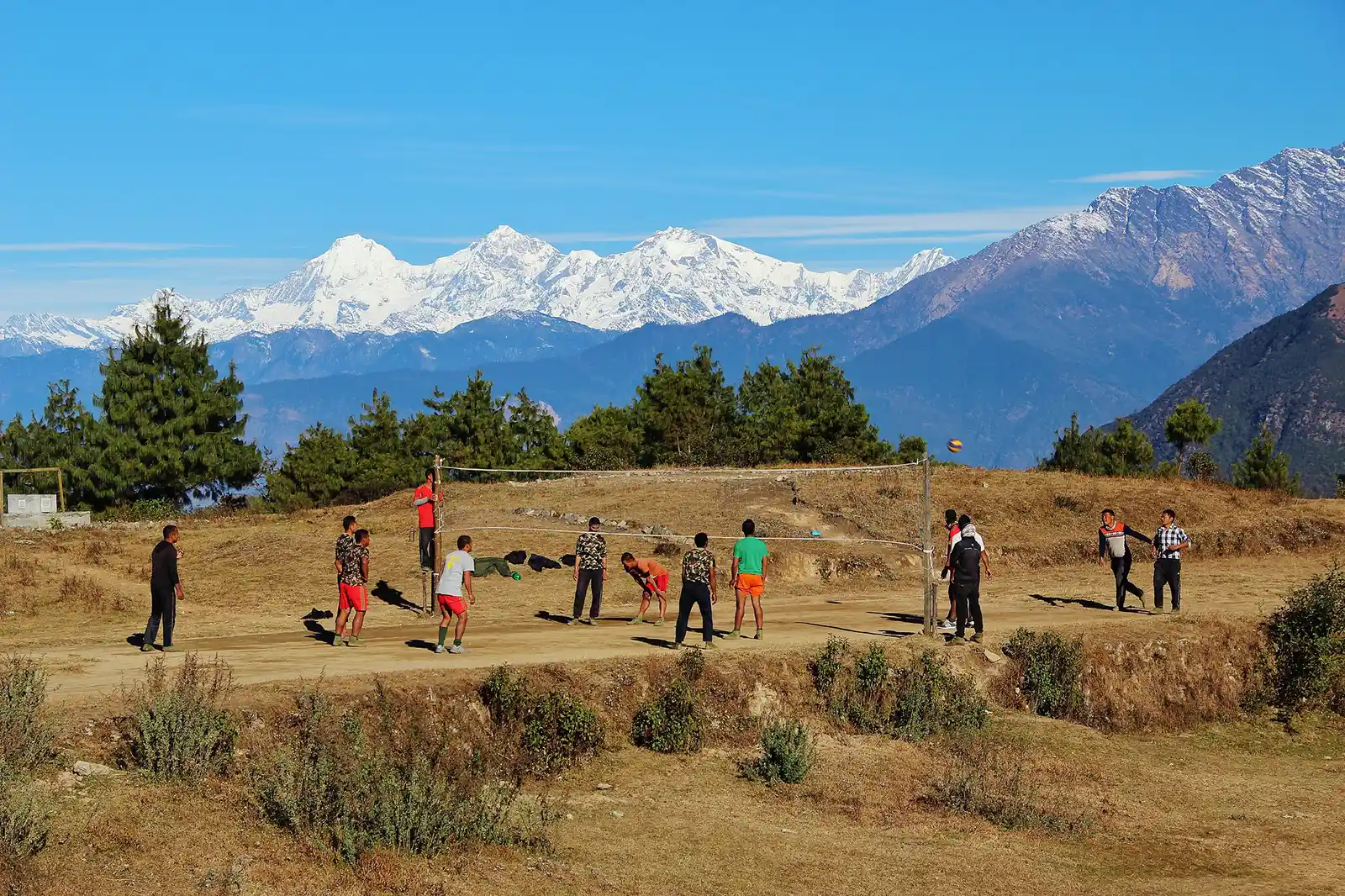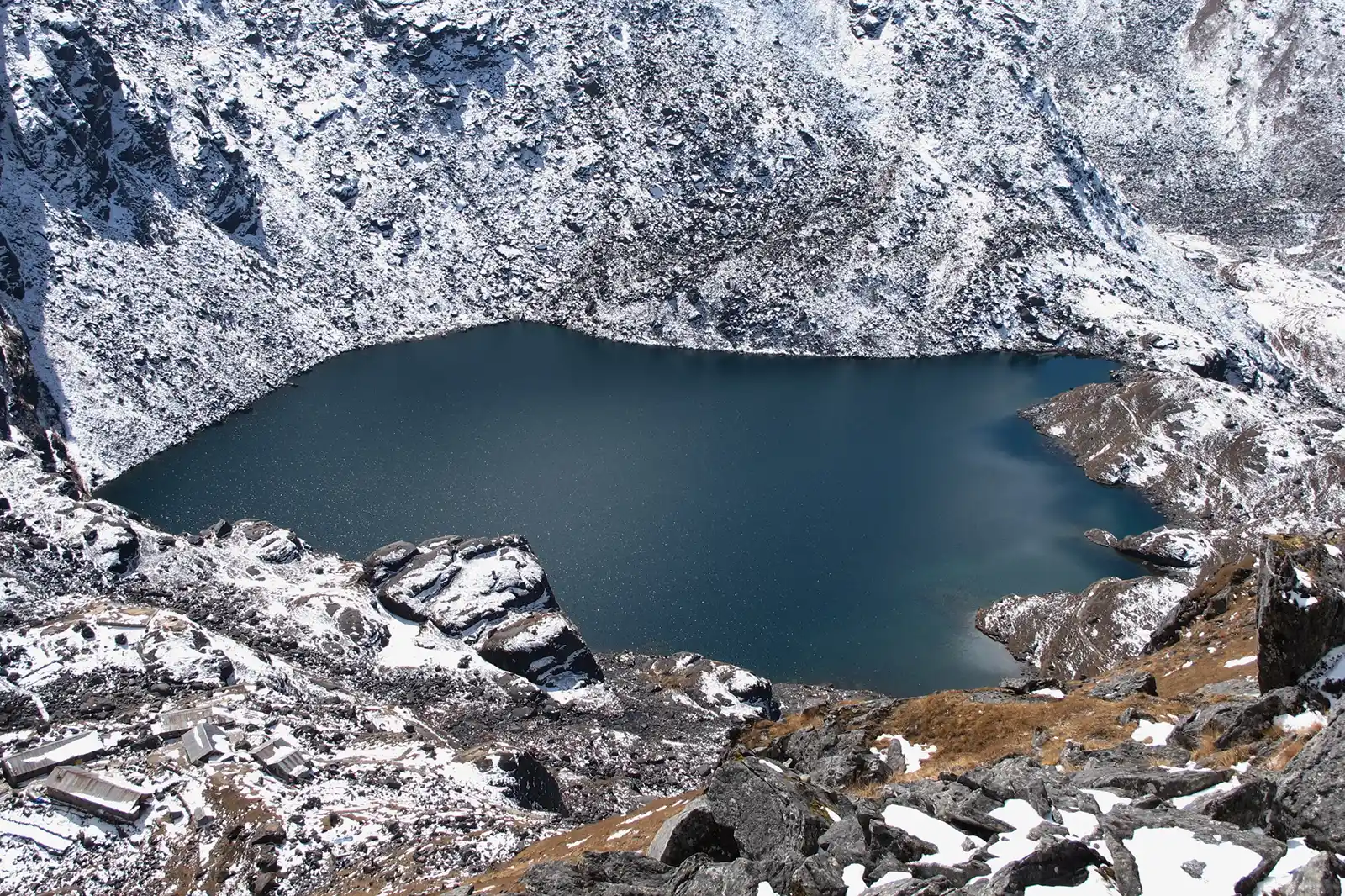Top 15 Places to visit in Nepal
- Friday February 14, 2020
- 0
Nepal attracts visitors for a variety of reasons. Many visitors are attracted by the mountains like Mt. Everest, Earth’s highest mountain in Nepal, while others are curious about the cultures, religions, and beliefs. Many more because Nepalese have cultures, religions, and religions that anyone wants to know about.
What does Nepal offer to Visitors?
The tourist destination of Nepal offers something for everyone. There are places for religious tourists, adventure seekers, and those who want to experience spirituality. The place can be heaven for foodies and culture enthusiasts. Some popular aspects of Nepal are:
- A trip to Nepal is a top destination for travelers, whether climbing the slopes of Mt. Everest or paying homage to the birthplace of the Buddha.
- The country holds scenic beauty of diverse landscapes, from snow-capped mountains of the North to subtropical forests.
- Nepal’s culture is filled with various old temples and holy places and colorful ambulant festivals.
- Kathmandu, the capital city, is the center of sacred and historical attractions.
- Wildlife view spots such as Chitwan National Park and Bardiya National Park are the perfect sanctuaries to observe animals and birds in their natural setup.
- Though seem similar the popular trek routes such as the Everest, Annapurna, and Langtang regions have diverse landscapes.
15 amazing places to visit in Nepal
Visiting Nepal can be proven the best travel choice for travelers, and it can be a life-changing experience, depending on how travelers travel or visit. Here are some important places to visit in Nepal:
1. Kathmandu
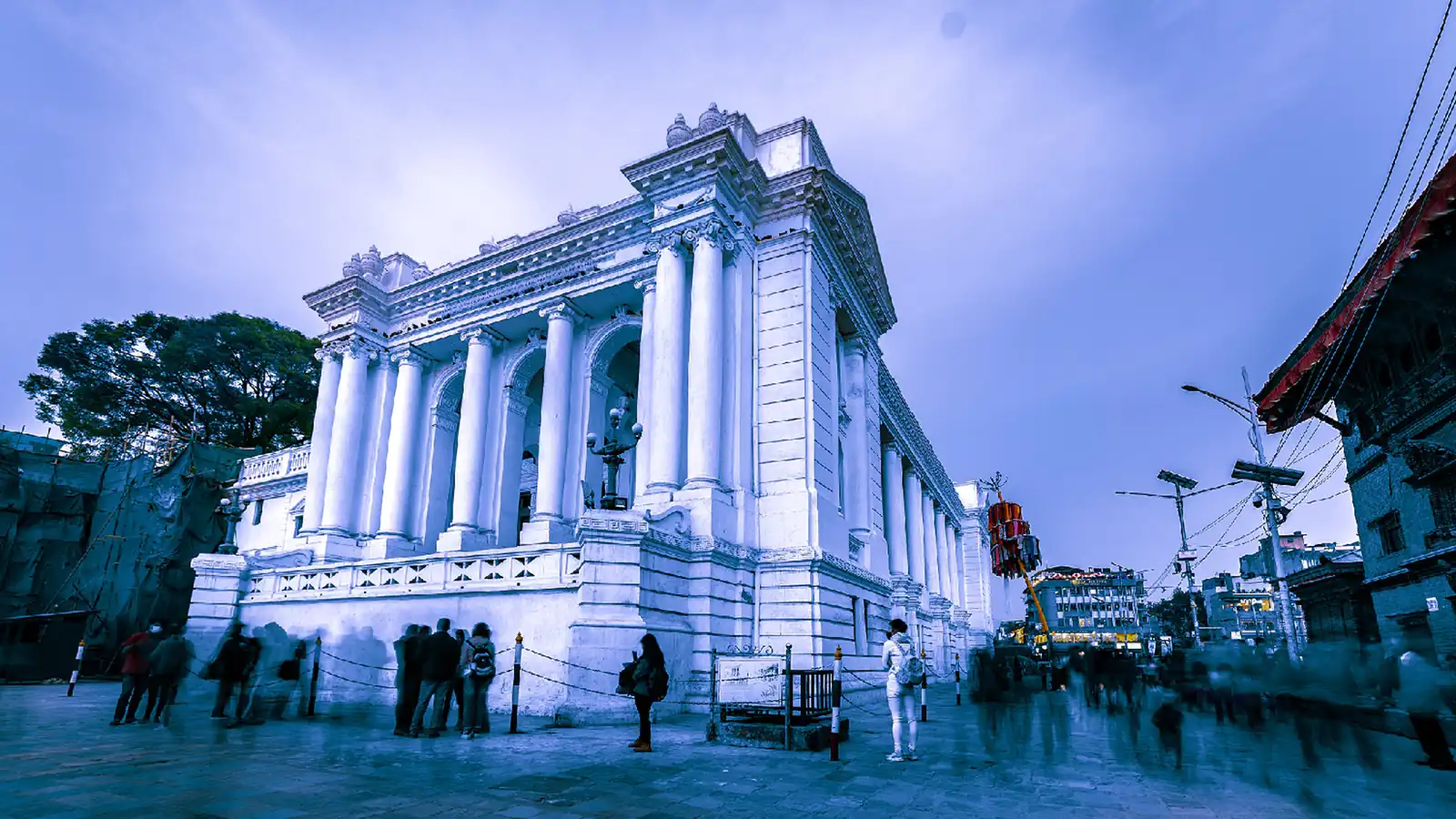
Kathmandu metropolitan city, the capital and biggest city of Nepalstands out because it’s unlike any other city in the world and is a popular tourist destination in Nepal. The city center has old buildings that are falling apart, which looks different from the lively atmosphere around them.
People go about their daily routines, street vendors sell their goods, and the scent of incense comes from stores. All of this happens near ancient temples and statues. Pashupatinath Temple, one of the most important temples of Hindus is located in Kathmandu.
Kathmandu used to be one of three important cities with Bhaktapur and Patan. Among these cities, Kathmandu Durbar Square is the most famous. It’s the biggest palace square in these three cities and it’s also a UNESCO World Heritage Site. Other places to visit in Kathmandu are Kumari Ghar, White Monastery, Hanuman Dhoka, White Gumba, Gujeshowri, and many other religious sites.
There are many different types of temples and monuments of various sizes, shapes, and designs here, representing different beliefs. In the 2015 earthquake, Kathmandu’s Durbar Square and many historic buildings were badly damaged.
2. Bhaktapur
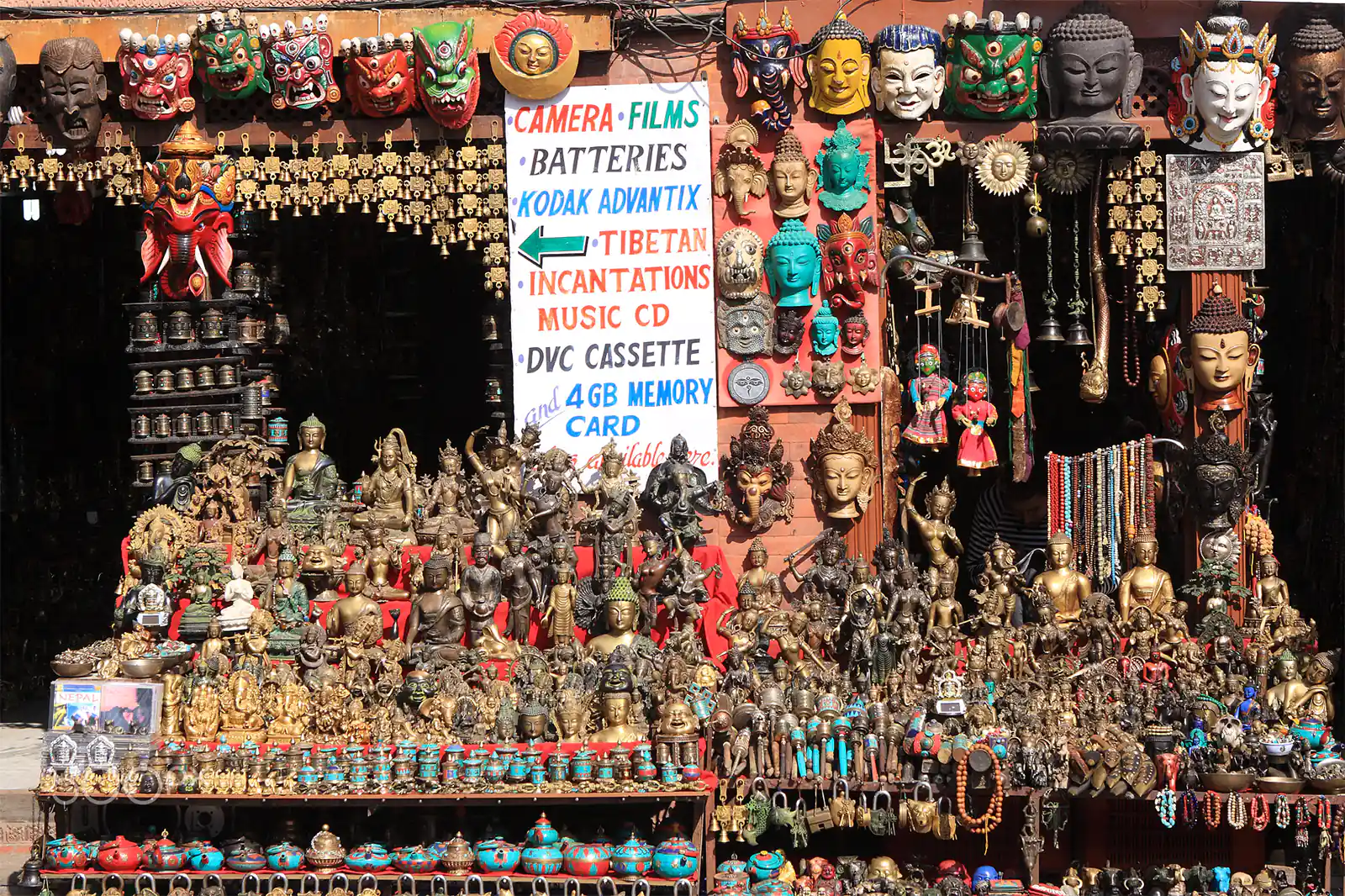
Bhaktapur is the smallest district of the country before Nepal became a federal republic. This royal city was on the pathway of the Tibet-Nepal trade route. The route played a crucial role in maintaining the economic prosperity of Kathmandu city.
Bhaktapur Durbar Square is the best place to begin a tour of the city. Moreover, the royal palace and several temples are also located. The whole area is enlisted in the UNESCO World Heritage Site. Some other attractions of Bhaktapur are Changu Narayan Temple and Nyatapola Temple.
In the 2015 earthquake, many of the buildings of Bhaktapur were damaged. Bhaktapur, which was beautifully preserved, experienced a fair share of damage during the earthquakes. Luckily, the city’s main temples and shrines were subjected to no or minor damage. All thanks to devotees of the City!
Bhaktapur is thinly populated than Kathmandu so peaceful walks around the durbar square is the best thing to do. But still on weekends, the place harbors 1000s of local tourists. In the National Art Gallery, a 15th-century structure, a famous site known as the 55-Window Palace, is kept.
3. Boudhanath Stupa
The Boudhanath Stupa is one of the World’s largest Stupas of its kind, just outside Kathmandu. Boudhanath Stupa is believed to be built during the 5th century A.D. It lies on the old trade route to Tibet and is a UNESCO World Heritage Site like Bhaktapur. During the 2015 earthquake, the Stupa faced minor damage; otherwise, it was in good condition.
The Stupa symbolizes enlightenment, but Boudhanath symbolizes enlightenment more clearly and fairly. The shapes of the stupa reflect five elements (earth, water, fire, air, and sphere) which is also the quality or character of the five Buddhas. It is believed that peace, satisfaction, and happiness can be felt after visiting Boudhanath Stupa.
4. Pokhara
About 200 kilometers to the west of Kathmandu, you’ll find Pokhara Valley. It’s at the bottom of some tall hills, surrounded by really high mountains like Dhaulagiri, Manaslu, and Annapurna. People also call Pokhara the starting point of the Himalayas. It’s where treks to the Annapurna region begin. People like to visit Pokhara for trekking and the city.
Even though this beautiful city has a lot of people, it doesn’t feel crowded like Kathmandu. The air is cleaner and the weather is nice. There’s a lake called Phewa Lake where you can find hotels, restaurants, and shops along the shore. This is a great spot for people who want to relax or take short trips.
Pokhara is a favorite place for tourists because of its peaceful lakes and views of the mountains. It’s like a calm and welcoming place. It’s also where people start their journey to the Annapurna region, a part of northwest Nepal that’s famous for its mountains.
The biggest lake in Pokhara is called Lake Phewa. There are restaurants, bars, and shops near it. There’s even a little island in the lake with a temple Taal Barahi where devotees hold ceremonies almost every weekend.
5. Annapurna Regions
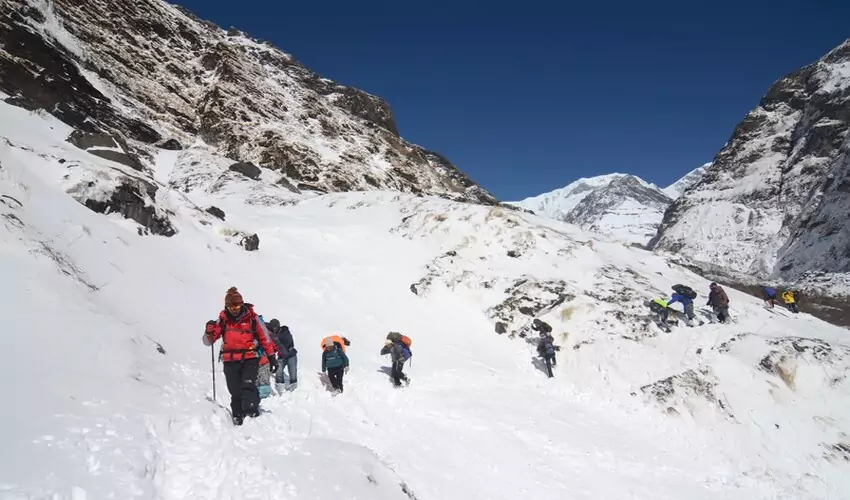
Annapurna Base Camp Trek is the second most popular (maybe first for many) fascinating trek to do in Nepal. It is placed in the second position after the Everest Region. In Annapurna Base camp, you will commonly pass through the majestic and breathtaking scenery and diverse landscapes. Annapurna Trek is known as the Annapurna Sanctuary Trek.
You can enjoy the thick bamboo, full of rhododendron, pine forest, beautiful mountain views, and a mix of cultures unparalleled by other treks. The Annapurna Base camp trek route will offer outstanding views of Himchuli, Annapurna I, Manaslu, Macchapuchhare, Poon Hill, and many other gorgeous mountain ranges.
It is also known as the unique trek because it passes through the quaint Gurung and Magar villages, lush, dense forest, terraced farmland, and enormous glaciers. This Annapurna base camp is a beautiful combination of mountain scenery and cultural and traditional diversity, bisecting a broad range of lush rural farmlands and villages still carrying the old-age fascinating culture and tradition.
Annapurna region is also rich in wildlife and natural vegetation with different mammals, amphibians, reptiles, more than 450 birds, and various rhododendron species. There is also one attractive place named Jhinu, where you can get a natural hot spring to help you refresh.
Annapurna region has many other fascinating trekking areas and routes like Upper Mustang, Ghorepani Poon Hili, Annapurna Circuit, Dhampus trekking, Ghandruk Village trekking, and many more. Offering one of the most stimulating trekking routes, Annapurna base camp is excellent for all those trekkers who want to feel some adventurous air of the World.
6. Chitwan National Park

This park in the southwest of Nepal is included in the UNESCO list of world cultural heritage sites. Chitwan National Park is the destination to experience different things about Nepal apart from the intrigue and the hiking of Kathmandu.
This is where we can do several things like wildlife viewing, a Safari-type atmosphere, and many more. Chitwan National Park is at an altitude of only 100 meters in some areas, and this area has a tropical monsoon climate. Chitwan National Park is usually quite different from what most people imagine discovering in Nepal.
People come here mostly to see animals, especially rare and endangered ones that the park protects. The lodges offer tours that take visitors into the park. You can walk or, more commonly, ride on elephants to get a good look at the more than 100 species of animals up close. Chitwan National Park is in the middle-south part of Nepal and it’s one of the best places in Asia to see wildlife.
In Chitwan, you can find rhinos, leopards, Bengal tigers, sloth bears, deer, buffaloes called gaur, and more wild animals. There are also crocodiles and freshwater dolphins in the rivers, but it depends upon your luck whether you will see them or not.
For bird lovers, Chitwan is great because there are over 500 species of birds there. It’s a paradise for people who study birds. The best time to visit Chitwan is from October to February. The weather is about 25°C on average, and it’s a bit humid. Mornings can be a bit chilly.
7. Langtang Region
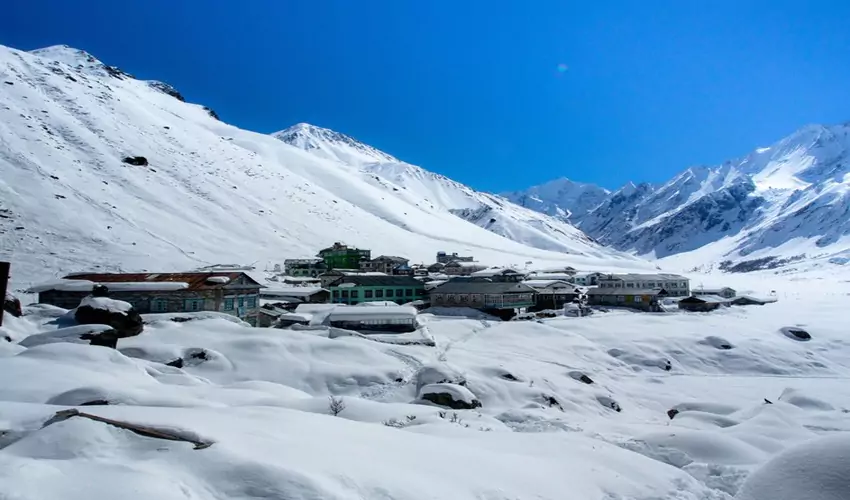
The Langtang Region is an unbelievable area for hiking, with some high passes, old monasteries, extensive views, and beautiful mountain scenery full of rhododendron forests that bloom during the spring hiking season all over the way.
However, it is less developed than other popular trekking areas in Nepal so the natural beauty is more preserved. Despite its proximity to Kathmandu, it is generally less busy on the trails. There are villages where facilities of guesthouses and food are all along the route.
The Langtang Valley can be reached within 7 and 8 hours, making it tremendously convenient where flights are not required. When there is a clear day, the peak of Langtang Lirung is visible from Kathmandu city.
Trekking duration will be short for a few days depending on your stamina and walking speed. Some trekkers combine the Helambu and Langtang National Park trek for a longer trek.
8. Swayambhunath (Monkey Temple)
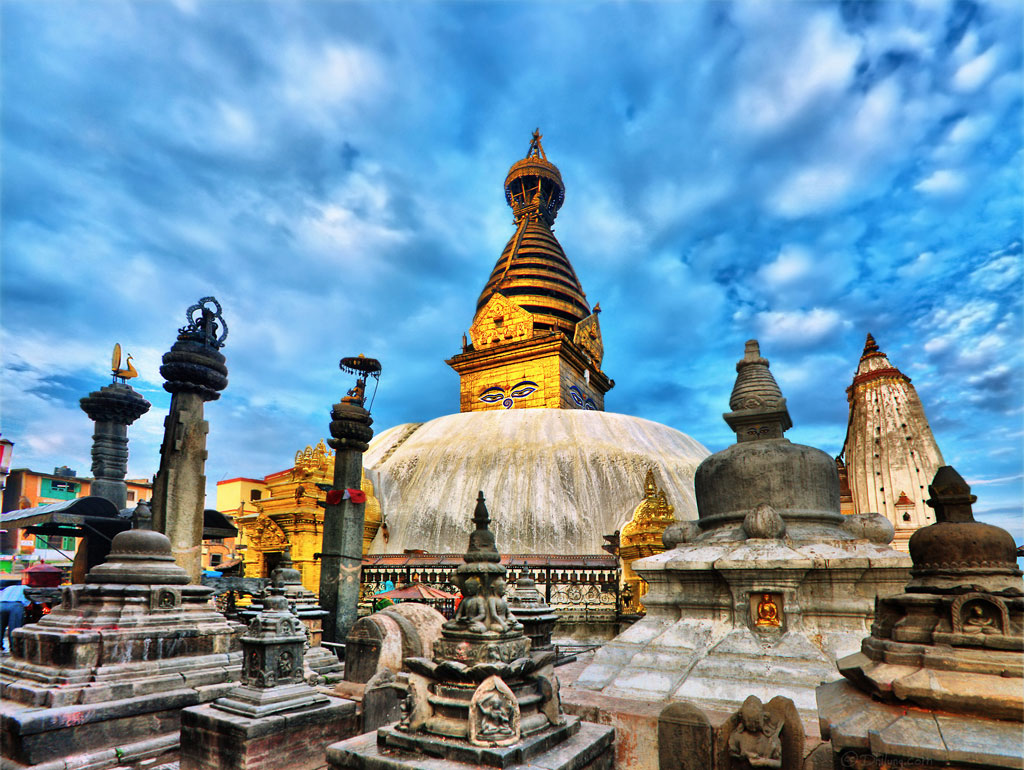
Swayambhunath temple is a really important religious place in the Kathmandu Valley, just like Boudhanath. It’s on a hill to the west of Kathmandu. People also call it the Monkey Temple because monkeys live there.
The Swayambhunath Stupa at the temple is special. It has eyes painted on it, like the eyes of a watching God. This stupa is the main attraction of this temple area and it’s really old. Swayambhunath is important for Buddhists from Nepal, Tibet, and especially for Newari Buddhists from the Kathmandu Valley because they follow the Vajrayana Buddhist tradition.
9. Everest Region
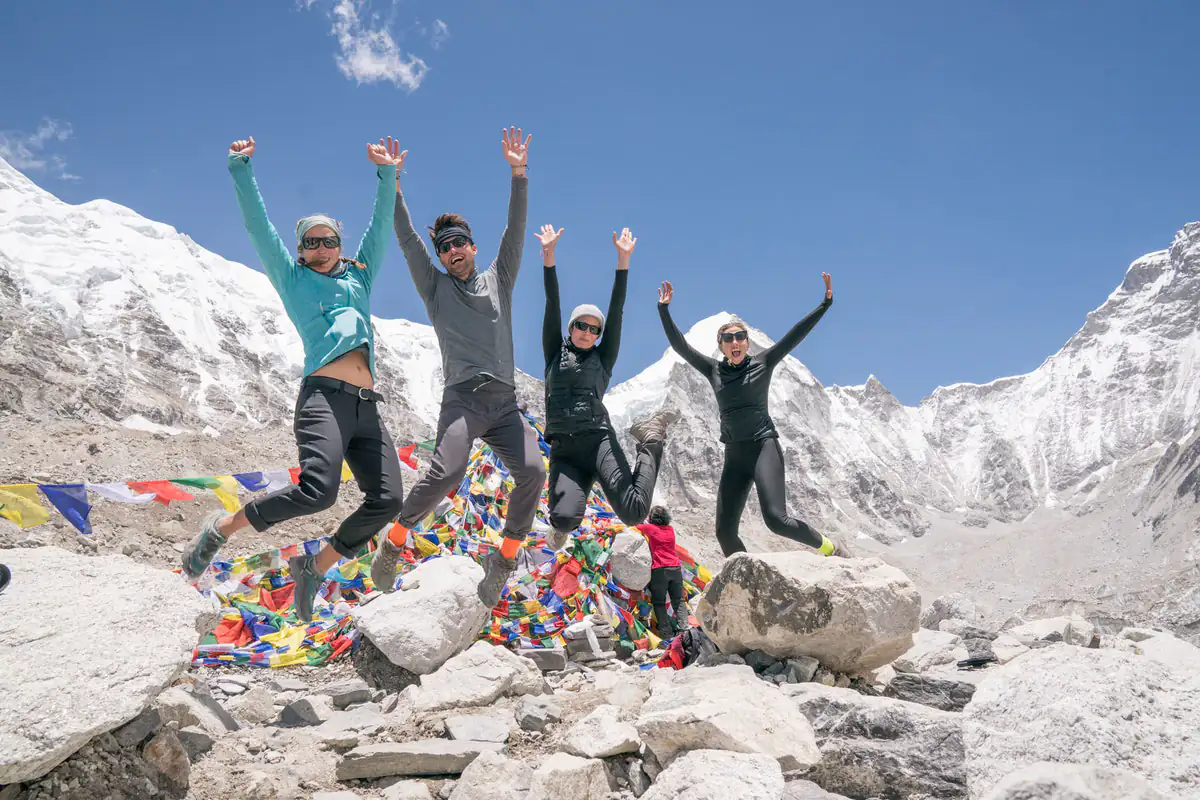
The tallest mountain on Earth is called Mount Everest, and its highest point is 8,848 meters (29,028 feet) above the ground. The peak was first conquered in 1953 by Edmund Hillary, a NewZealander mountain climber, and Tenzing Norgay who was assisting Edmund to reach the peak.
After that, more and more people reached the top of the mountain, but many others just trek to Everest Base Camp to see the highest peak from a distance. Some reasons, such as an earthquake in 2015, avalanches, and disagreements between climbers, have affected trekking and climbing on Everest.
Even though the Everest Region might not be the most beautiful place for trekking, a lot of climbers are attracted to Everest. There are different ways to get to the base camp and different plans you can make for your trip.
You can go on a guided hike around Sagarmatha National Park or base camp with companies from Nepal or other countries. You can also hire a guide or someone to help carry your things. But, it’s really important to have a guide with you. As per current weather conditions, the best time to hike around the Everest region is March-May and September-December.
If you don’t want to trek to Mount Everest but you still want to see it, you can go to a place near Kathmandu called Nagarkot. On clear days, you might be able to see Everest from there. The staff at your hotel will let you know if Everest is visible on those mornings. This is the easiest way for travelers who don’t want to trek but still want to see the world’s highest peak.
10. Lumbini
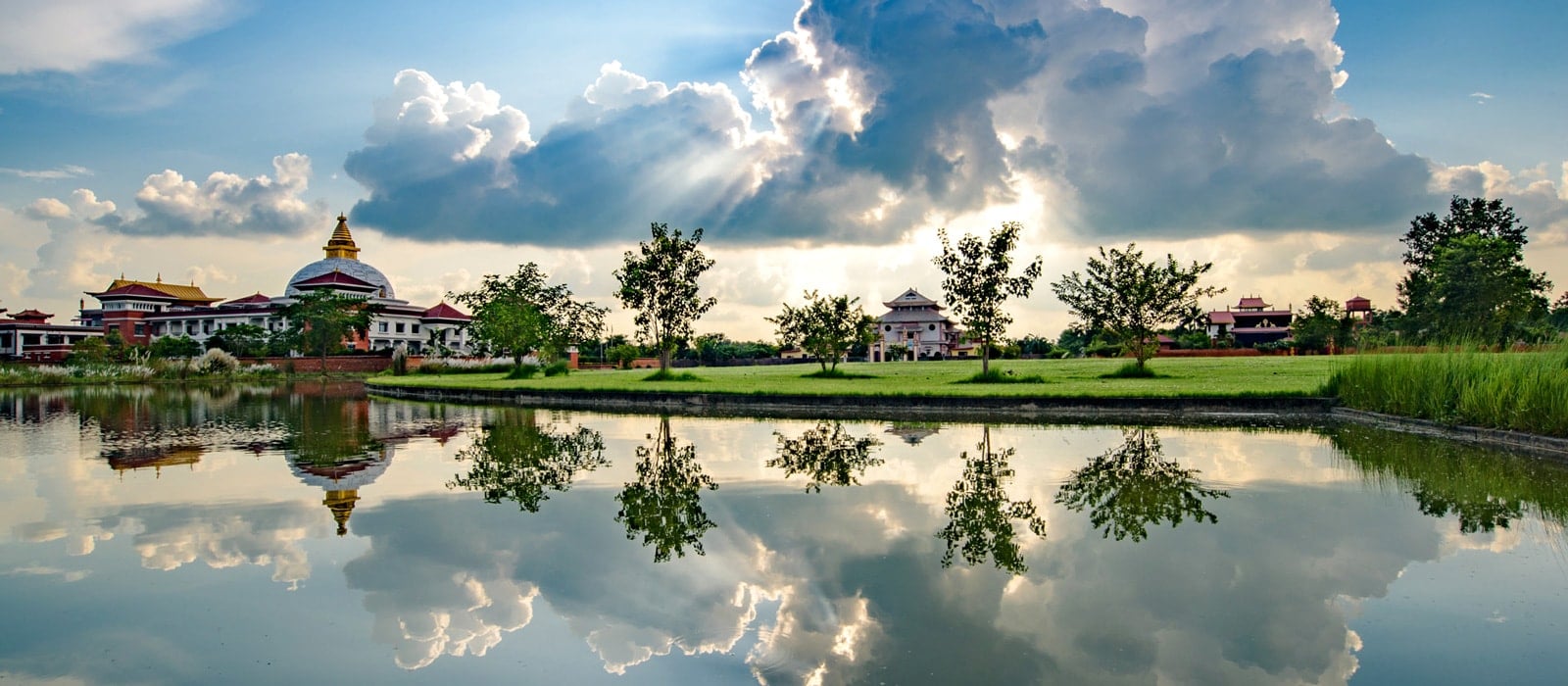
Kapilbastu, Lumbini, is famous because it’s where Siddhartha Gautama, also called Buddha Shakyamuni, was born. It’s not far from Kathmandu, about 250 kilometers away. This special place has a monument from a really long time ago, around 550 B.C. Archaeologists, scientists, and people who are curious like to visit this famous place.
Lumbini is a nice place to stop by when you’re going from Pokhara to Chitwan National Park. It’s a calm town for people on a religious journey, and it’s also on the list of important places by UNESCO. Most of the people who come here are Buddhist pilgrims from Nepal and other parts of the world. They come to follow the path Buddha took in his life and visit many Buddhist temples around.
In Lumbini, there’s the Maya Devi Temple, which is special because it’s dedicated to Buddha’s mother. The temple holds numerous pieces of evidence related to the birth of Lord Buddha. In the middle of a small park made by a Japanese architect named Kenzo Tange, there are many monasteries, meditation places, sacred ponds, and places for culture.
11. Helambu Trek
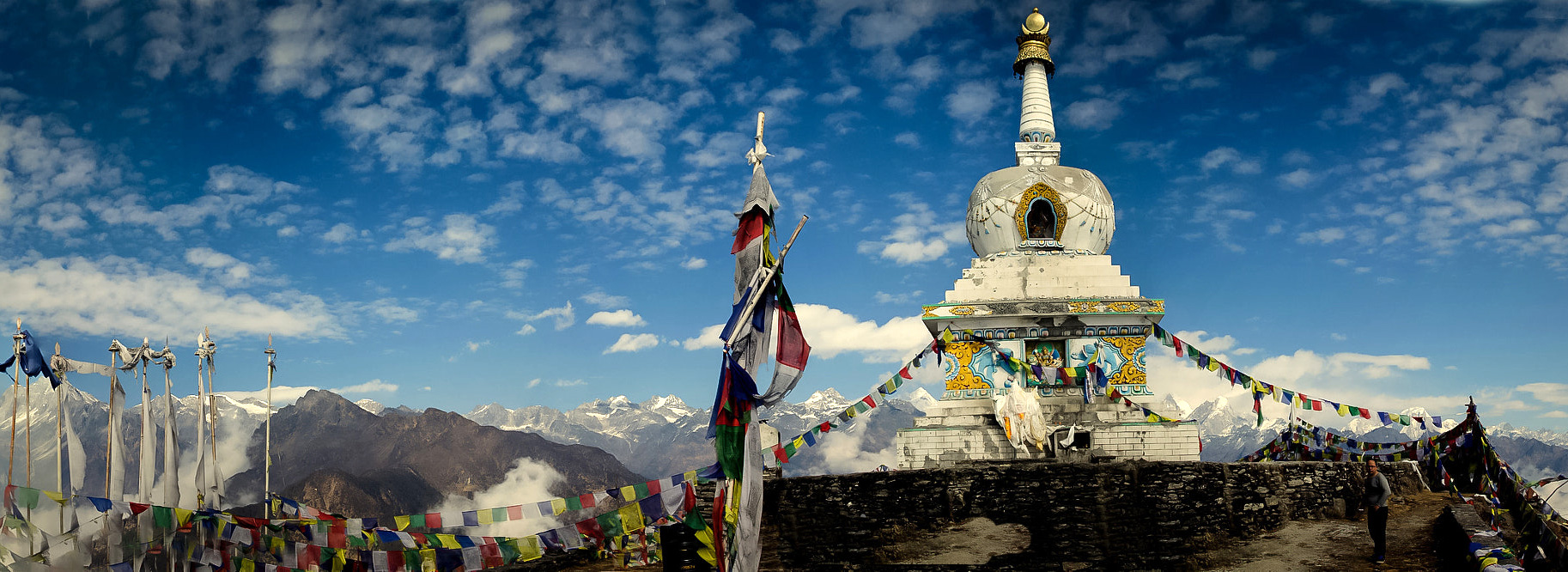
The Helambu region is one of the most famous places for trekking in Nepal. It’s where the Sherpas live, and it’s up in the upper part of the Malechmi Khola Valley. There are trekking companies that can guide you on hikes in Helambu.
The special thing about this not-so-popular destination is that it’s not too far from Kathmandu, and the heights you go to aren’t super high, but you still get to see panoramic views of beautiful mountains. Because of these reasons, a lot of tourists want to explore Helambu.
The Helambu Trek begins in Nepal’s capital city, Kathmandu, and the whole trip takes around five to eight days. The usual plan is to walk in a circle for about seven days, with the first part of the walk being repeated at the end. However, many people who come to Nepal for this trek find it harder than they expected and a bit more complicated than they were told.
Trekking in the Himalayas is always tricky, even though it is not as high as another trek. Helambu trek is still a physically and mentally demanding hike, and trekkers should be in good physical condition. With that in mind, this is a beautiful trek and well worth the effort for adventure lovers.
12. Ghorepani Poon Hill Trek
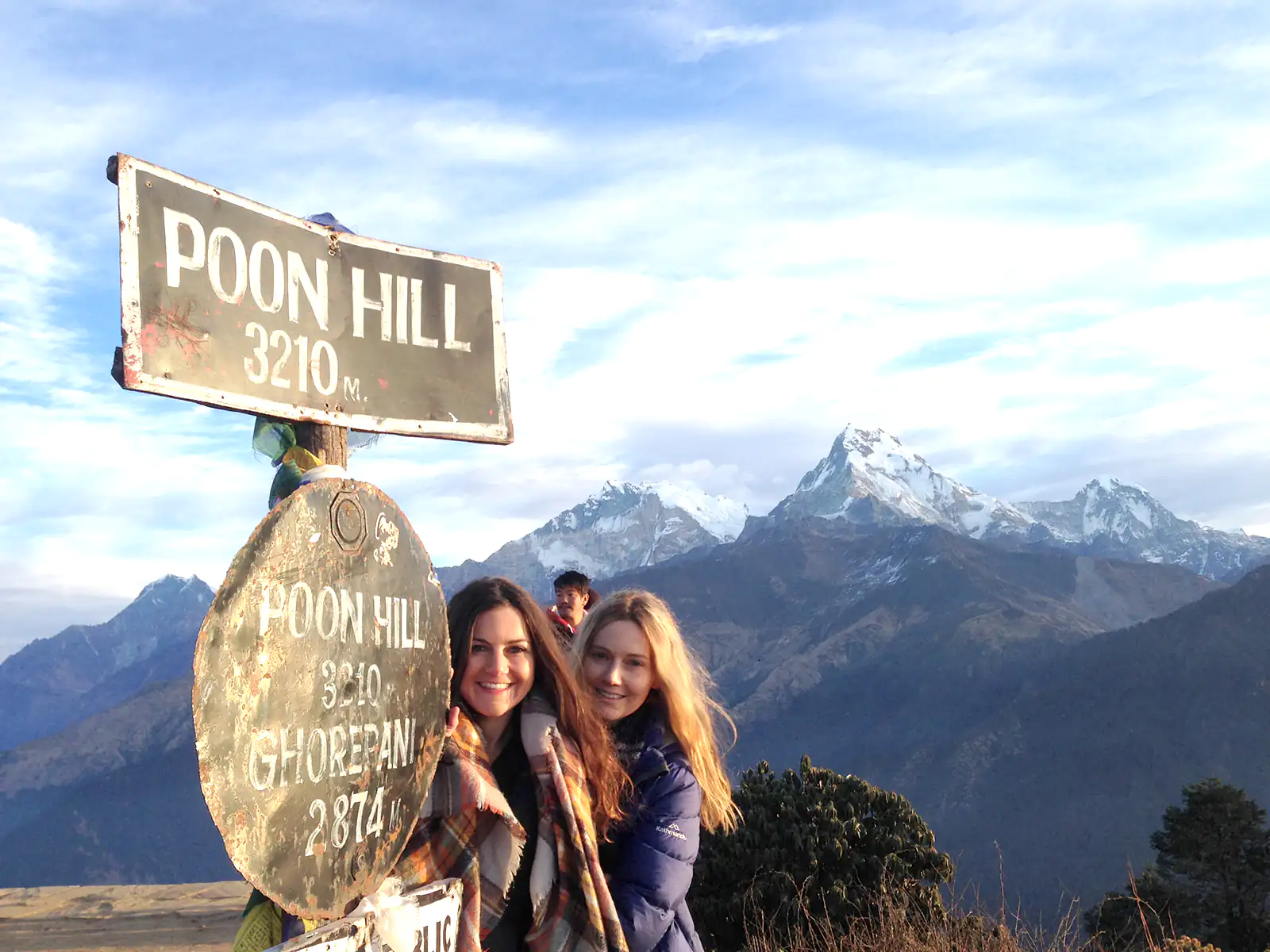
Poon Hill is one of the most famous viewpoints in the World and Nepal. After Kala Pattar, it is almost certainly the second most famous viewpoint. There are many options to expand a trip here, and the only restrictions to the length of the trek are imagination and time.
There are a lot of lodges all over the route, which will be proper for most people. Poon Hill extends in the foothills of the Annapurna in the Himalayas. At the same time, as it is below the snowline in Nepal year-round, it is an astonishing hill to hike up for the first light.
Poon Hill is located southwest of the Annapurna massif and crossways a large river valley; it also commands spectacular views of all-around four Himalayans. Annapurna, Machapuchhre, Dhaulagiri, and Nilgiri South. The stride from Ghorepani to the peak is short, but if approaching from the north, be ready for a long, uphill day before the sunrise expedition with a 1,500m steep ascent.
13. Janakpur
The lovely temple of Ram and Sita is found in the middle of south Nepal on the flat Terai lands, in a place called Janakpur. A long time ago, Janakpur was the main city of an old Indian kingdom called Mithila. The ruling king Janak’s daughter Janaki (Sita) was married to Lord Ram who was an avatar of Lord Vishnu. The ancient culture of Mithila, called Maithili culture, is still strong here.
Also known as Janaki Temple, lots of Hindus from all around the world come to the temple to celebrate a big event Vivah Panchami: the anniversary of Ram and Sita’s marriage. The temple has three floors and 60 rooms. It’s a huge marble building from the 19th century and it’s the most important temple in Nepal. The best part is more than 100 sacred pools and small ponds are scattered around the city.
14. Nagarkot
Nagarkot is one of the most known places in the Kathmandu Valley. And mainly, it is perfect for travelers who want to experience the beauty and majesty of the Himalayas without strenuous physical activity or other activities. Kathmandu Nagarkot is also known as the best for its views of the Kathmandu Valley and the mountains.
Landed on an extensive range to the northeast of Bhaktapur, the village of around Four thousand and five hundred residents requires views of eight Himalayan ranges. There’s a mixture of attractive hotels in every price range in Nagarkot, many of which are within walking distance. Nagarkot view tower is a beautiful place to hit in Nepal to observe the sun rising over the Himalayas and relax.
15. Gosainkunda Lake
One of the best places in our beautiful country is Gosaikunda Lake. Gosainkunda Lake has located at an altitude of about 4360m. Gosainkunda is considered Nepal’s most sought-after pilgrimage site. Gosaikunda is considered of Nepal’s most sought-after pilgrimage sites. The mountains mainly surround it, and a significant ensemble of nine other lakes accompany the Gosaikunda.
In August, Every year during Janai Purnima, hundreds of Hindu pilgrims visit here for a holy bath in the lake. The large rock at the center of the lake is said to be the remains of a Shiva shrine. It is also claimed that the channel carries water from the lake directly to the tank at the Kumbheshwar Temple in Patan in the Kathmandu valley.
Conclusion
There you have, a list of the 15 best destinations to explore in Nepal. And it is not the end of the list, you can add 100s more, and still, there will be many more places to add to your bucket list. When you come to Nepal on your next trip, do not forget to roam around these amazing spots.
And remember a major earthquake struck Nepal in 2015, also recognized as Nepal’s black day, causing extreme damage in Kathmandu and other areas of the country. The region explained above might not be the same as a lot of recondition might have changed the appearance of the scenic spot. Before visiting any place, international tourists are advised to hire a travel agency for a smoother experience.
